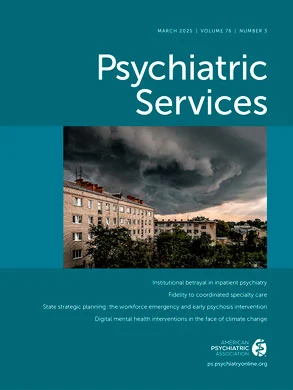In Reply: Drs. Dinakar and Sobel's suggestion that a population as seriously ill as the VA's should require monthly appointments misses the point of my article: the method was based on actual outpatient data rather than theoretical assumptions about utilization.
To be sure, some patients did require frequent visits, but most were seen far less often. Perhaps they were less ill, were transient through the area, or were seen only for an initial evaluation and did not follow up. Regardless, the resulting mix of patients required on average fewer visits than one would suppose from a priori assumptions. The time needed for intervening in crises and arranging for transfers is included in the time allotted for the average patient visit; outreach was largely handled by non-M.D. clinicians.
As all clinicians know, in a busy clinic, missed appointments rarely result in time unfilled but are consumed in the record keeping and other myriad duties required in managing a large patient population. Once again, the point: My conclusions were not arrived at by arbitrarily "altering the standards for required frequency of patient visits." Rather, they reflect the actual practice at three clinics as determined by the needs of the patients themselves.
Using the complete spreadsheet model, interested readers can substitute their own actual outpatient data to determine local staffing requirements. I will e-mail as an attachment the spreadsheet with instructions for modification to any reader who wants to experiment. Send requests to
[email protected]. Please state your name and version of your word processing program and preferred version of Lotus or Excel.
I share Drs. Dinakar and Sobel's concerns about quality, and I agree with their assertion that outcome measures should also be studied. No one can disagree about the need for further research to correlate staffing needs with outcomes, keeping well in mind the necessity of defining somehow the balance point between cost and quality.
The issues raised by Dr. Barglow and his colleagues have many roots. Until 1996 I was the service chief and immediate supervisor of these four fine physicians, each of whom I had hired in the mutual expectation of building a strong, academic VA psychiatry service. Numerous calamities befell us, including an earthquake that led to the eventual closure of our medical center, the gradual erosion of our training program, changing leadership at our university, an uneasy (if transitory) clinical relationship with the Air Force, a far-reaching reorganization within the Department of Veterans Affairs, and a downsizing that cost nearly 600 jobs and that, through reassignment, affected nearly everyone who worked with us.
I am unaware of evidence that these physicians or any others who worked for me were delivering substandard care. Indeed, during those years Dr. Barglow was responsible for the rehabilitation of a languishing, ghetto-based methadone maintenance site into an efficient, multimodality substance abuse clinic. It yielded high patient satisfaction and, that rarity of rarities, an unannounced visit by the Joint Commission on Accreditation of Healthcare Organizations that resulted in no recommendations of any type whatsoever! In the year before leaving California, I saw patients one day a week, averaging more than 22 outpatient visits per day (so much for the feckless general glued to his computer screen), and I shared our staff's pride in the perceived quality of care we rendered.
However, valid conclusions can be derived only from data that can be tested statistically and replicated. Drs. Dinakar and Sobel have proffered good advice, which I would pass along to my friends in California: commit to paper statistically valid data relevant to suicide attempts, readmission rates, patient satisfaction, and staff morale and attrition and submit them to a refereed journal.

